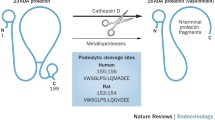Abstract.
Prolactin inducible protein (PIP) is a 17- kDa single polypeptide chain, known by various names due to its versatile nature and function in human reproductive and immunological systems. It is expressed in several exocrine tissues such as the lacrimal, salivary, and sweat glands. Its expression is up regulated by prolactin and androgens, and estrogens down regulate it. Due to its over-expression in metastatic breast and prostate cancer, presently PIP is considered as a prognostic biomarker. Moreover, its aspartyl-proteinase nature suggests its role in tumor progression. PIP has unique features because it is small in size and plays multiple important functions. Its ability to bind potentially with CD4-T cell receptor, immunoglobulin G (IgG), actin, zinc α2-glycoprotein (ZAG), fibronectin and enamel pellicle, reveals its important biological functions. This is the first comprehensive review on the structure and functional analysis of PIP and its clinical applications.
Similar content being viewed by others
Author information
Authors and Affiliations
Corresponding author
Additional information
Received 04 August 2008; received after revision 09 September 2008; accepted 15 September 2008
Rights and permissions
About this article
Cite this article
Hassan, M.I., Waheed, A., Yadav, S. et al. Prolactin inducible protein in cancer, fertility and immunoregulation: structure, function and its clinical implications. Cell. Mol. Life Sci. 66, 447 (2009). https://doi.org/10.1007/s00018-008-8463-x
Published:
DOI: https://doi.org/10.1007/s00018-008-8463-x




